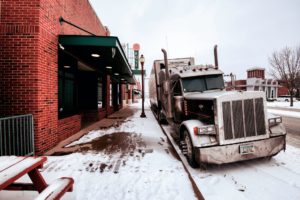Four days of bitter cold temperatures and sustained blackouts have left Texans demanding answers about how electric companies handled the recent crisis. Several residents I talked to via social media and text experienced prolonged power outages while others I talked to never suffered a single disturbance.
Some of the contacts believe the outages are representative of class warfare.
“We haven’t had power for three days,” said one resident of a largely Hispanic neighborhood via Facebook Messenger recently. “Neighborhoods of color are disproportionately without power.”
One of the Weekly’s followers on Instagram suggested that the disparities in access to electricity were intentional and based on class.
“Last night, I looked at the outage map by zip code,” the follower said. “To me, it seems very obvious that the bottom 30% financially of each zip code lost power. The wealthiest neighborhoods in Fort Worth never lost more than a few minutes. It’s messed up.”
Poor neighborhoods were pummeled by the loss of power, but they weren’t the only ones. Affluent gated community Montserrat was also without power for days. While our staff hasn’t come across evidence of a concerted effort to favor wealthy neighborhoods with electricity during the three-day power crisis, one thing is clear: The promised rolling blackouts that would supposedly spread the power loss across Tarrant County were largely nonexistent.
Instead, most Tarrant County residents experienced complete power loss or little to no loss of power at all. We reached out to Oncor, which provides electricity to 10 million Texans, for answers. In an email, an Oncor spokesperson said that some houses experienced complete power loss while others kept power for several reasons.
“When we are directed to implement controlled outages, we strive to avoid dropping hospitals and other critical loads and infrastructure,” the message read. “If a customer happens to live near a hospital and therefore shares that connection, they may not lose power. Meanwhile, their neighbor just down the street may be connected to different equipment and therefore do lose power.”
Keeping certain areas “energized” continually through the blackout was done to maintain grid stability, the spokesperson said.

“Should a substantial and potentially dangerous amount of generation suddenly drop, these [neighborhoods] essentially serve as areas of last resort because their system has built-in safeguards that would automatically drop customer load to prevent cascading widespread outages or ultimately a blackout,” the Oncor representative said. “As these limited areas must be energized in order to provide this grid protection, it could affect one customer but not their neighbor. Keeping these limited areas energized also helps stabilize the system.”
The spokesperson acknowledged that rolling blackouts are typically used to address power shortages, but the recent winter storm required a different strategy to protect the integrity of the grid system. Those orders came directly from the Electric Reliability Council of Texas (ERCOT), the nonprofit that manages the Texas grid, which is a massive network of power generators and transmitters.
“Typically, our emergency operation plans spread these outages across the service territory on a rotating basis,” the Oncor spokesperson said. “But due to the severity of this unique and widespread power emergency, Oncor was directed by ERCOT to drop a record amount of load over a much longer period of time. Therefore, we had to drop all available, non-critical load, and regular rotations were prevented. Those outages were absolutely critical for ensuring the integrity of the grid and preventing cascading impacts such as a blackout.”
For a look into the causes of Texas’ electrical woes, read our recent blog post.













If they can control where the power is being sent then they could have controlled the length per-section.
This could have prevented the devastating infrastructure losses. People could have maintained some control over any losses.
Poor management on the part of Oncor and Ercot most of the managers need to be replaced. Been there too long!!
We called Oncor many times leaving messages. Thecomputer continued to tell us our neighborhood was repaired..tne neughborhood was repaired EXCEPT for 7 homes. We called Txu, non emergency police, City of Bedford as well as others. All took info and said they reported our complaint. NO ONE CAME TO OUR NEIGHBIRHOOD TO CONFIRM, TO CHECK IT OUT, TO VALIDATE. Finally our neighbor found an Oncir repairman driving in an Oncir truck and brought him to our neighborhood. TRANSFORMER WAS BLOWN!!!! No one would have ever known. 94 hours without heat
I don’t think that anybody at Oncor can find their over paid butt with both hands. if there is a possibility that you can be dropped from the grid “for prolonged periods of time”, the consumer should be informed in advance. We had 50 hours of power interruption and water damage but the “rolling blackout” lie was pushed through Monday morning Feb 15, when Oncor knew better. Oncor then continued to lie to my elderly neighbors about when the power would be back on for two days, until dear old Oncor stopped giving any information at all.